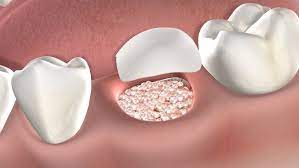Have you been recommended to get dental implants to replace missing teeth? But does poor bone health keep you away from achieving your goals? Worry not! Modern dentistry offers comprehensive solutions like bone grafting to help rebuild the lost bone structure and density. Bone grafting offered by the Houston dentist is a surgical procedure that involves transplanting bone tissue to replace or repair damaged or missing bone in the body. The goal of bone grafting is to provide a framework for the growth of new bone, allowing the body to heal and restore its natural shape and function.
In this article, we will delve into the world of bone grafting, exploring the procedure, types of bone grafts, benefits, risks, and what to expect during the recovery process.
What are the types of bone grafts?
There are several types of bone grafts, each with its advantages and disadvantages. The most common types of bone grafts include:
Autograft: A graft taken from the patient’s own body, usually from the chin, jaw, or hip.
Allograft: A graft taken from a donor, usually from a tissue bank.
Xenograft: A graft taken from an animal source, usually from a cow or pig.
Alloplast: A synthetic graft made from materials such as hydroxyapatite or calcium phosphate.
Dentin graft: A graft made from extracted teeth.
How is bone grafting performed?
The bone grafting procedure typically involves the following steps:
Harvesting: The surgeon harvests bone graft material from a donor site or a tissue bank.
Preparation: The recipient site is prepared by cleaning and shaping the area to receive the graft.
Grafting: The bone graft material is placed at the recipient site and secured with sutures or plates.
Recovery: The patient is allowed to recover from the procedure, and the graft is given time to integrate with the surrounding bone.
Does the procedure offer any benefits?
Bone grafting offers several benefits, including:
Improved appearance: Bone grafting can help restore the natural shape and appearance of the face and jaw.
Increased functionality: Bone grafting can help improve dental function and reduce pain.
Enhanced quality of life: Bone grafting can improve overall quality of life by restoring confidence and self-esteem.
Some additional facts to consider:
|
Are there any risks involved?
As with any surgical procedure, bone grafting carries some risks, including:
- Infection
- Nerve damage
- Rejection of the graft
- Resorption of the graft
- Prolonged recovery time
- Poor healing
What to expect during recovery post-procedure?
The recovery process for bone grafting varies depending on the individual and the extent of the procedure. Some common experiences during the recovery process include:
- Pain and discomfort
- Swelling and bruising
- Limited mobility
- Dietary restrictions
- Follow-up appointments with the surgeon
Final note
Optimal bone health is crucial, especially while planning for dental implants for the replacement of missing teeth. Modern solutions like bone grafting can help rebuild and restore bone tissues in deficient areas. Bone grafting is a complex surgical procedure that requires careful planning and execution. While it carries some risks, the benefits of bone grafting make it a valuable option for individuals seeking to repair or replace damaged or missing bone. By understanding the procedure and types of bone grafts, individuals can make informed decisions about their care and take the first step towards a healthier, happier life.
